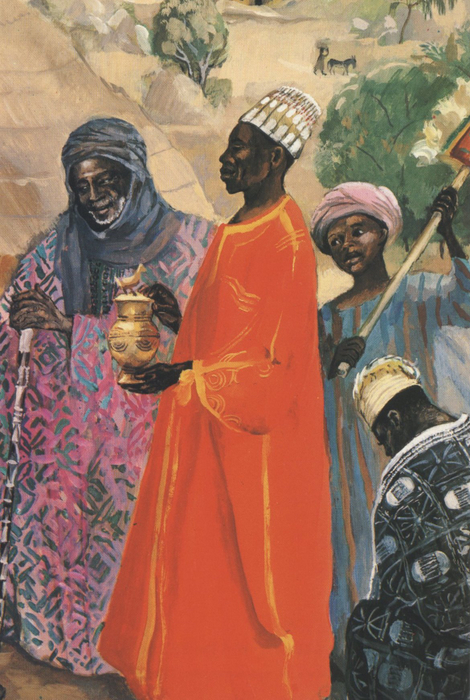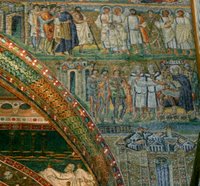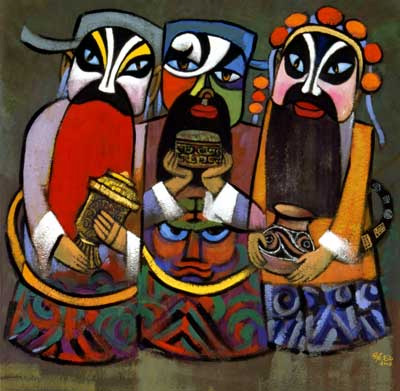
Talking about the Magi pushes the boundaries for thinking about Advent, because the Magi don’t enter into the story until almost two years after Jesus is born. King Herod inquires of the Magi the time of the appearance of the star, and when he commands that the infants be killed, it is those male infants two years old and younger. The coming of the Magi is observed on January 6 – Epiphany.
What is of interest to us is the fact that when they inquire of Herod they say, “Where is he who has been born king of the Jews? For we saw his star when it rose and have come to worship him” (Matt 2:2). They were astrologers, after all, and kept their eyes to the sky. There has been much discussion over the years of what they actually saw. A comet is a common depiction of the event. Some have speculated it was a rare conjunction (several planets being in close proximity in the sky). Whatever it was, they noticed!
We can benefit from noticing a few things ourselves:
First, when they ask, “Where is the child who has been born king of the Jews,” we should ask, “How did they know?” How did they know that this celestial event heralded the birth of the king of the Jews? They were not the only ones to believe that an important ruler would be born in Palestine (Suetonius and Tacitus, two later Roman historians seemed to believe this). But how did Persians come to believe it?

This is a great lesson on paying attention in the context of our academic disciplines. The Magi combined what had been revealed by God (probably in Nebuchadnezzar’s dream) with their study of the skies. Are we paying attention as we conduct our studies?
We should note that it took them some time to get there! Because we are not sure exactly where they were coming from, we can only guess how long the journey would take. We do know it would have taken some time to prepare for the journey. It might be that several different groups had to come together. Maybe they needed permission to make the journey. What really matters is that they went!
It would have been much easier to have stayed home. They could have rested in their knowledge that a king had been born. Wouldn’t that knowledge have been enough? No! Somehow they knew that this event demanded a more active response.
We who live in an academic world can sometimes think that the “knowing” is enough. Knowledge is good! May God increase our knowledge of our world and of him. But may he also show us our proper response. As God reveals things to you in the midst of your studies, what responses are you called to make?
Smart people are tempted to figure things out on their own! But the Magi get help. They go to Jerusalem and ask where to find this new born king. And on the way, God shows them exactly where to go (again, there has been many guesses on how this worked, but the point is, it *did* work!).
Getting help can be hard, but notice the blessing that comes: they ask (and get) help from people, and get help from God too. It is the openness shown by the asking of people for that help that somehow unlocks the door for more direct help from God. They are humble!
A word of caution: These Pagans (I don’t mean that as a dig) hear from God, and can truly help us in our quest to follow Jesus (not to mention in *their* journey to know Jesus). The story ends well for Nebuchadnezzar – by the end of Daniel 4, he seems to have come to a significant relationship with God. But not so much for Herod! Herod tries to play the Magi but the Magi get more help from God to avoid helping Herod any further. Herod had said, “Go and search diligently for the child, and when you have found him, bring me word, that I too may come and worship him” (Mt 2:8). But it appears he never intended any such worship for the Magi are “warned” not to return to Herod.
Be careful out there! Accept the gifts God brings through the broader world, but remember that there are forces aligned against God!

And what else can we do? Worship is the proper response to this child born to give his life to redeem the world. And we have gifts to give – just as the Magi brought gifts found where they (probably) came from, so we bring the gifts of scholarship, learning, and teaching. We lay them before this king!
Ah, but we are ahead of ourselves – it is still Advent. So here is an idea for us: Tonight (or some clear night this week), go outside and look up. If you live in the city your view will not even be close to the spectacular view of the Magi, but you can see some of the stars in the sky, and certainly the moon if it is up. And as you view the sky, ask God to give you the gift of the Magi – no, not gold, etc. – but the ability to see the signs of what God is doing (especially in your scholarship) and then the wisdom and courage to respond.
Next post in the series: Zechariah.
Last week Charlie Claus explored The Shepherds as supporting cast members. For the Emerging Scholars Network’s growing Advent collection click here.
Footnotes
- JESUS MAFA is a response to the New Testament readings from the Lectionary by a Christian community in Cameroon, Africa. Each of the readings were selected and adapted to dramatic interpretation by the community members. Photographs of their interpretations were made, and these were then transcribed to paintings. See: www.jesusmafa.com and www.SocialTheology.com. ↩
- This is on the arch of the church and contains several interesting portrayals. Christ is presented with angels, greeted by David dressed in royal garb, asserting Christ’s kingly nature. The bejeweled female figure is possibly Mary or Sarah. Below the Magi in their unique garb greet Herod, above a representation of the birth city Bethlehem. ↩
- Dr. He Qi is a professor at the Nanjing Union Theological Seminary and a tutor for master candidate students in the Philosophy Department of Nanjing University. He is also a member of the China Art Association and a council member of the Asian Christian Art Association. ↩
Charlie Clauss works with Intervarsity’s Graduate Student and Faculty Ministry in Minnesota and the Dakotas.

Leave a Reply